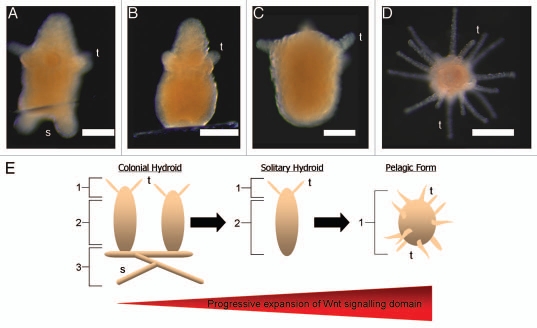Figure 1.
From Hydractinia to Hydra? (A) Normally developing Hydractinia primary polyp. Both developing tentacle and stolon buds are visible. (B and C) Examples of the primary-polyp-only phenotype produced by deregulating Wnt signaling with a combination of azakenpaullone and Tcf RNAi. Heads (top) and body columns were patterned normally, but stolons failed to develop. This phenotype resembles the body plan of the solitary polyp Hydra, providing a hypothetical insight into the evolutionary origin of Hydra from a colonial ancestor, such as Hydractinia. (D) Ectopic activation of Wnt signaling during metamorphosis, using azakenpaullone results in a completely oralised phenotype consisting of a free floating ball of tentacles in which body column and stolons fail to develop. (E) Schematic representation of how a change in the expression of a Wnt signaling component during development could result in a dramatically altered body plan. 1, Wnt3 expressing head tissue; 2, body column tissue; 3, stolon tissue. Scale bars: 200 µm. t, tentacles; s, stolons.

